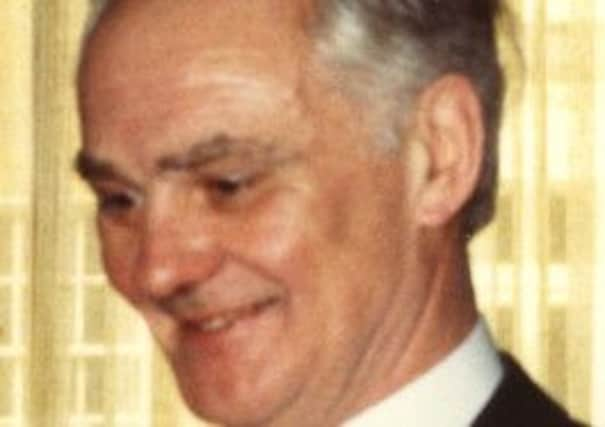Obituary: Derek Lyddon, former Chief Planning Officer for the Secretary of State for Scotland


DEREK Lyddon had a long and distinguished career in land management planning, first as an architect and planner in several new towns and then for many years as Chief Planning Officer for the Secretary of State for Scotland in the then Scottish Office. In this latter period I knew him well, as a close and valued colleague as well as a good friend.
William Derek Collier Lyddon was born in Essex in 1925, the youngest of three children. His father, a civil engineer, had designed the first dual carriageway in Britain and also the runway at Benbecula airport during the war. Derek was educated at Wrekin College before joining the Royal Navy in 1944.
Advertisement
Hide AdAdvertisement
Hide AdWhen he was demobilised he used his free train ticket to go from Portsmouth to Skye, unaware no doubt that he would spend most of his subsequent career in Scotland. He then took a degree in architecture and a diploma in town planning from University College, London.
He embarked on a career in the development of new towns, first at Stevenage and then, after a short interlude in Belfast and Coventry, at Cumbernauld, where he was for five years deputy chief architect and planning officer. He took particular responsibility for designing the south side of the new town and colleagues from that time describe him as always supportive, kind and loyal.
His final move in new town development was to Skelmersdale, where he was chief architect and planning officer. Skelmersdale was started after a considerable gap in the building of English new towns and lack of expertise in England provided opportunities for those who had been working on the Scottish new towns.
In 1967 he moved to the Scottish Development Department (part of the then Scottish Office) as Chief Planning Officer, where he was to remain for the next 18 years and where he was to face some important challenges, notably the development of North Sea oil, the rundown of many of Scotland’s older industries and the planning, social and economic demands of urban renewal. His staff from that time describe his management as a breath of fresh air, if it hadn’t been for the fact that his room was full of smoke from his pipe! He was a talented leader, highly respected by his staff, encouraging them to develop new ideas and always with time to listen to their problems, even if they were not related to their work.
The achievement for which he will perhaps be best remembered was the development of planning guidelines for land-based development related to North Sea oil. The requirements, especially for the building of rigs and production platforms, were particularly challenging. At this time there was a move from steel to concrete platforms, following the example of Norway, and there were only a few sites with deep enough water to accommodate them. Derek arranged for the whole of Scotland’s coastline to be surveyed and suitable sites which met these requirements, but were also environmentally acceptable, identified. Publication of this guidance for local authorities and companies was invaluable, because it signalled that proposals were likely to be accepted in these areas without the need for an expensive and time-using public inquiry.
The result was that the demanding requirements of North Sea oil development involving pipeline landfalls, oil and gas processing plants and the building of massive rigs and platforms were met with minimum hassle, something which in retrospect now seems incredible when compared with the problems involved with wind farm development. Only for one major development was there a public inquiry and that was for a proposed platform building yard at Drumbuie in Wester Ross, where there was exceptionally deep water that made it suitable for the Norwegian Condeep design. But that was on land owned inalienably by the National Trust for Scotland and was not a site identified in the planning guidelines. In the event it did not get approval.
In a development of this work Derek went on to publish National Planning Guidelines for other forms of development in Scotland, which were also of major benefit to local authorities and businesses. He became increasingly involved in projects for urban renewal and in tackling the serious problems of urban deprivation in Scotland, which stemmed from the legacy of poor housing and the rundown of traditional industries.
On retirement from the Scottish Office, Derek became chairman of the Edinburgh Old Town Renewal Trust for eight years, where he saw his role not simply in trying to protect the historic buildings, which give the town its character and are its invaluable heritage, but in trying to find new uses for them, making the new compatible with the old and bringing people to live there once again.
Advertisement
Hide AdAdvertisement
Hide AdHe was also a member and then chairman of the management team for the government’s Glasgow Eastern Area Renewal project. He was chairman of the Planning Exchange, chair of the Edinburgh School of Environmental Design, chairman and then honorary president of the Grange Association. He served on the economic and Social Research Council and was external examiner at several universities. He was given an honorary DLitt by Heriot-Watt University in 1981 and awarded the CB in 1984.
Derek married Marian Charlesworth in 1949, whom he had met during his service in the Royal Navy, where she was a WREN. She died a few years before him but they are survived by their two daughters.